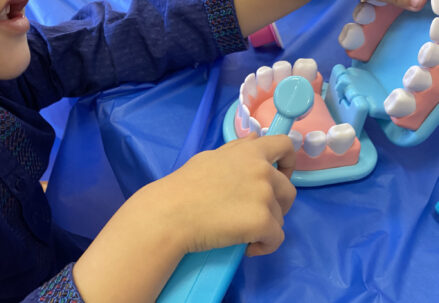Walking around campus, you may not think twice about the names of the buildings that surround you. But each one has been named after someone or something historically significant. Dorchester Hall, the home of the Honors Global Communities program, is named after Dorchester County, the home of the famous abolitionist and social activist Harriet Tubman.
Last month, the Honors Global Communities (HGC) program hosted a field trip to Dorchester County on Maryland’s Eastern Shore to visit the Harriet Tubman Underground Railroad Byway. HGC is one of the Honors College’s newest programs, providing students with an interdisciplinary understanding of global issues through both study and experience. The trip was indicative of the kind of experiential learning that HGC offers, taking advantage of UMD’s proximity to historically significant places in Maryland and DC.
“Dorchester County is meaningful in American history because of Tubman’s legacy there,” said freshman government and politics major Lucas Patchell of the trip. “It was meaningful to me to learn the history related to Dorchester Hall, the dorm I’m living in now.”
When the students got off the bus in the historic city of Cambridge, they were immediately greeted by a mural of Tubman at the Harriet Tubman Museum & Educational Center. The powerful image features Tubman with her hand extended out and “beckoning the viewer to join her on a journey to freedom,” according to the center’s website. A tour guide took the students along each stop of the Tubman Byway, which includes the Dorchester County Courthouse, the Harriet Tubman Museum and the Blackwater Wildlife Refuge, where Tubman worked logging and cutting lumber as a child.
“The museum was very audience centered and I was engrossed in every single piece of text,” said freshman neuroscience major Aneesh Singh. “It was fascinating to see all these artifacts from Tubman’s life so well preserved and to learn about Black history that I wasn’t taught in school.”
One of the most compelling stops on the tour was the Stanley Institute, previously known as the Rock School, a one-room schoolhouse run by African American families after the Civil War to teach their children to read. The school stayed open until the 1960s.
“We saw where each grade would sit in this very small room,” said Ariana Paulino, a freshman criminology and criminal justice major. “I didn’t know much about Harriet Tubman before but I learned so much being immersed in places where she lived and worked.”
HGC’s faculty director, Sarah Croco, added, “For those who went, Dorchester isn’t just a name on a building anymore, it’s a reminder of a lovely outing we took together and the incredible legacy of Harriet Tubman.”
HGC gives students an opportunity to learn about relevant global issues and cultural histories that they might not learn in their primary areas of study. The trip to Dorchester County connected the legacy of Tubman, who died in 1913, with current conversations about race and resistance in the United States and around the world today. In particular, the bronze Harriet Tubman sculpture, “Beacon of Hope,” placed in front of the courthouse last year, inspired students to see how the fight against oppression continues to this day and into the future.
“We learned that, over time, the bronze layers will wear away to reveal a gold color that could last a few thousand years,” said Patchell. “She’s not going anywhere.”
To learn more about Honors Global Communities, visit globalcommunities.umd.edu.
By Kate Spanos ’16 Ph.D. theatre, dance, and performance studies











